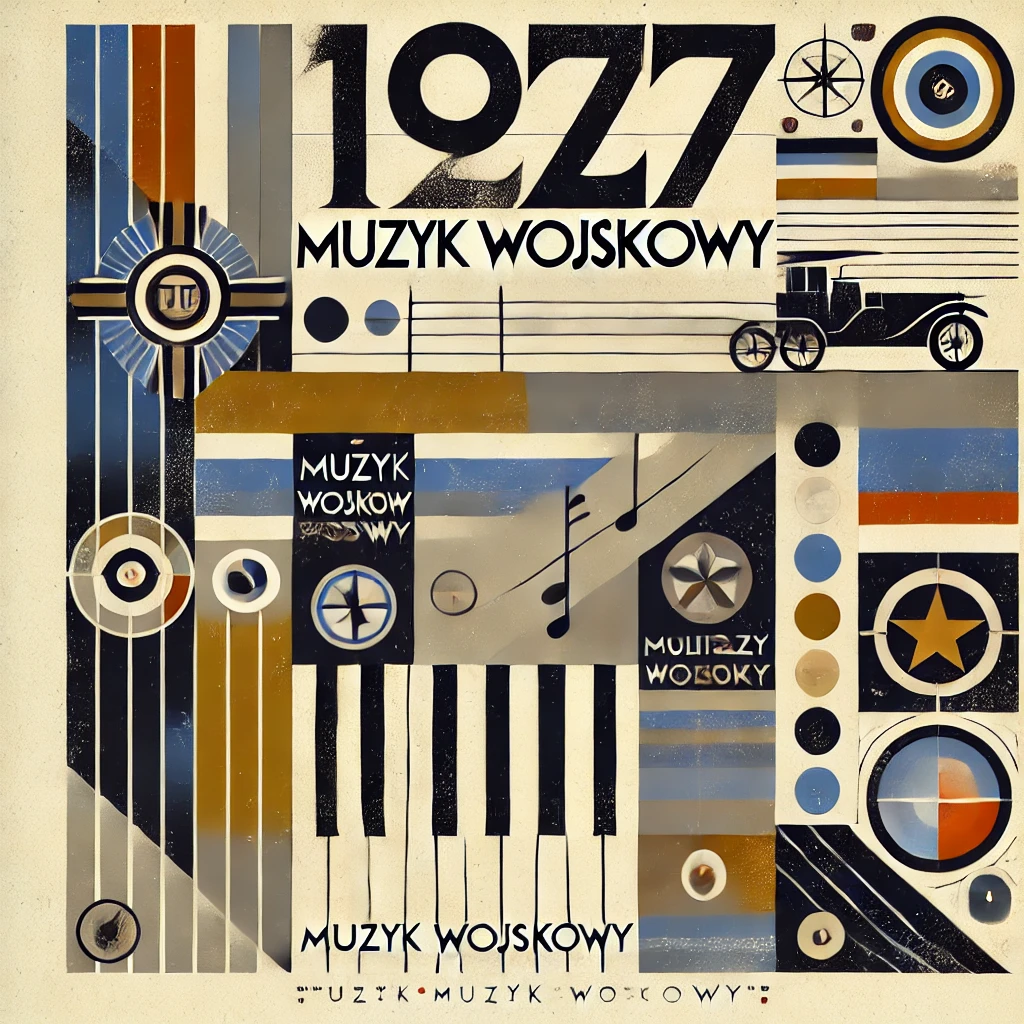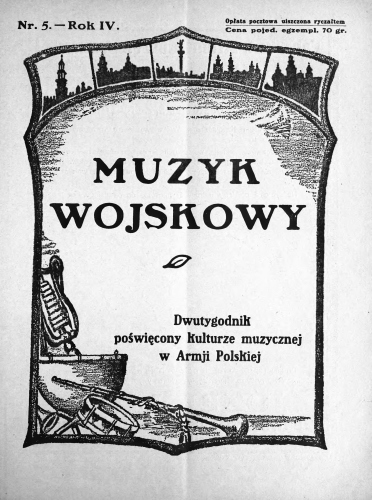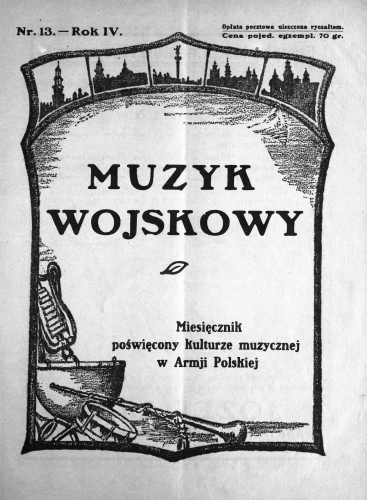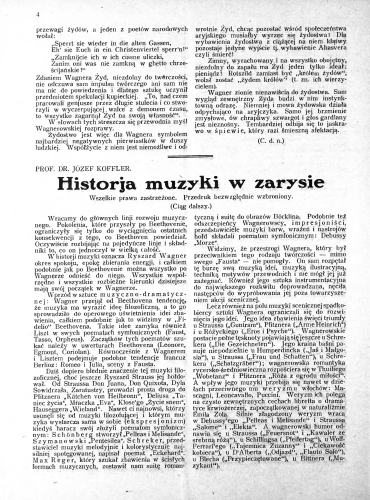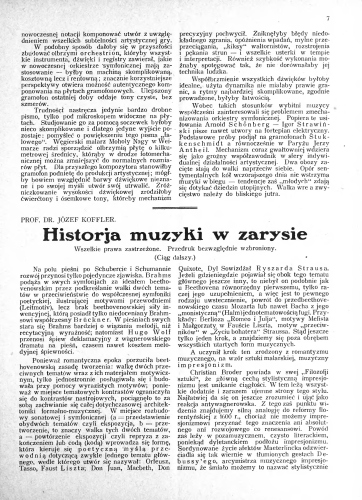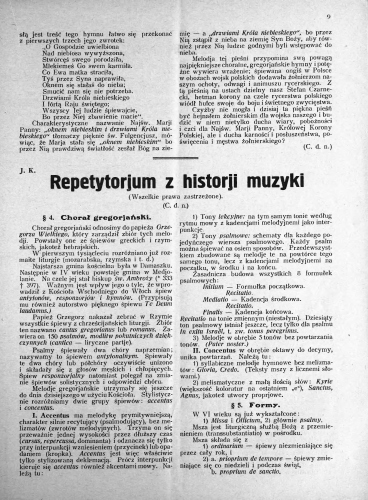
Muzyk Wojskowy
This military music periodical, devoted to musical activities within the Polish Armed Forces, began as a biweekly publication before transitioning to a monthly format.
The journal received official endorsement from the Ministry of Military Affairs, as documented in a letter dated August 4, 1926. The editorial office was located in Grudziądz at 18/1 Tuszewska Grobla Street. The publication was printed at Wiktor Kulerski's Printing Works in Grudziądz-Tuszew.
In addition to the journal itself, the editorial board also published supplementary materials for military bands, including march booklets and sheet music paper.

Muzyk Wojskowy – Problems of Music
This series of articles presents a comprehensive examination of theoretical and practical aspects of music, beginning with the fundamentals of musical perception in the article "How Does One Hear Music?", proceeding through an analysis of elementary musical components in "The Tone and What Can Arise from It", and advancing to a detailed discussion of compositional techniques in "Methods of Melodic Development". The author also addresses musical forms and genres, while exploring issues of musical expression and mood in compositions. Koffler substantiates his arguments with numerous musical examples and references to the works of renowned composers, particularly Bach, Beethoven, and Mozart.
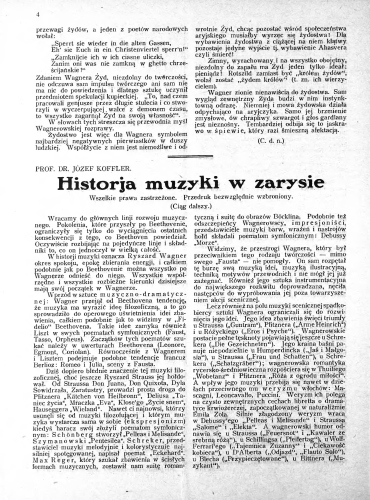
Muzyk Wojskowy – A Survey of Music History
This is a systematic exposition on the history of European music from the early Middle Ages to modernism. The text focuses on the evolution of musical forms (e.g., madrigal, sonata, symphony), the technical development of instruments (particularly the piano, lute, and organ), and the transformations in compositional styles (key figures include J.S. Bach, G.F. Handel, Ludwig van Beethoven, Richard Wagner, Gustav Mahler). In Koffler'' approach, the history of music appears as a logical developmental process in which each innovation grew from earlier achievements and prepared the ground for future transformations.
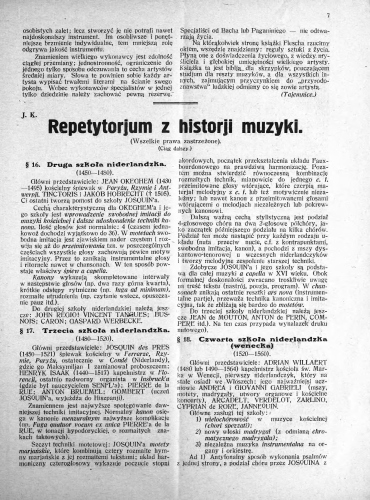
Muzyk Wojskowy – Compendium of Music History
This is a synthetic presentation of the history of European music, beginning with the music theory of ancient Greece through the development of medieval music to the early Baroque period. Koffler traces the genesis and transformations of compositional techniques from early polyphony through the imitative techniques of ars antiqua and ars nova to the pinnacle achievements of the Netherlandish schools (1450–1560). He analyzes in detail the accomplishments of the Venetian school with Monteverdi and the Neapolitan school, after which he presents the development of national opera styles in the works of Lully and Purcell. In the section devoted to sixteenth-century music, he discusses the stylistic transformations associated with humanist ideas and demonstrates the connections between Polish music and the compositional technique of the Netherlandish school.

Muzyk Wojskowy – On Orchestral Colours
The lecture explores the evolution of musical instrumentation through the prism of stylistic transformations across three pivotal periods: pre-classical, classical, and romantic. Koffler defines instrumentation as the art of utilizing the sound color of orchestral instruments to express orchestrally conceived music. He demonstrates the gradual emancipation of sound colour – from a subordinate element of musical structure to an autonomous vehicle of artistic expression. Particular emphasis is placed on the evolution of wind instruments, which progressively acquire greater independence and significance within the orchestra.

Muzyk Wojskowy – Ornamentation
The series is dedicated to a comprehensive examination of musical ornamentation. The author presents a systematic exposition on various types of ornaments in music, categorizing them into three main groups: anticipatory ornaments, subsequent ornaments, and sustained ornaments. The articles provide detailed discussions of elements such as trills with preparatory appoggiaturas, various types of grace notes, turns, mordents, as well as arpeggios and tremolos. The text is abundantly illustrated with musical examples demonstrating the correct execution of individual ornaments, while also addressing the differences in their notation and interpretation between early and more recent music. The author references performance practices of renowned composers such as Bach, Mozart, Beethoven, and Händel, demonstrating how the application and notation of ornaments evolved over time.

